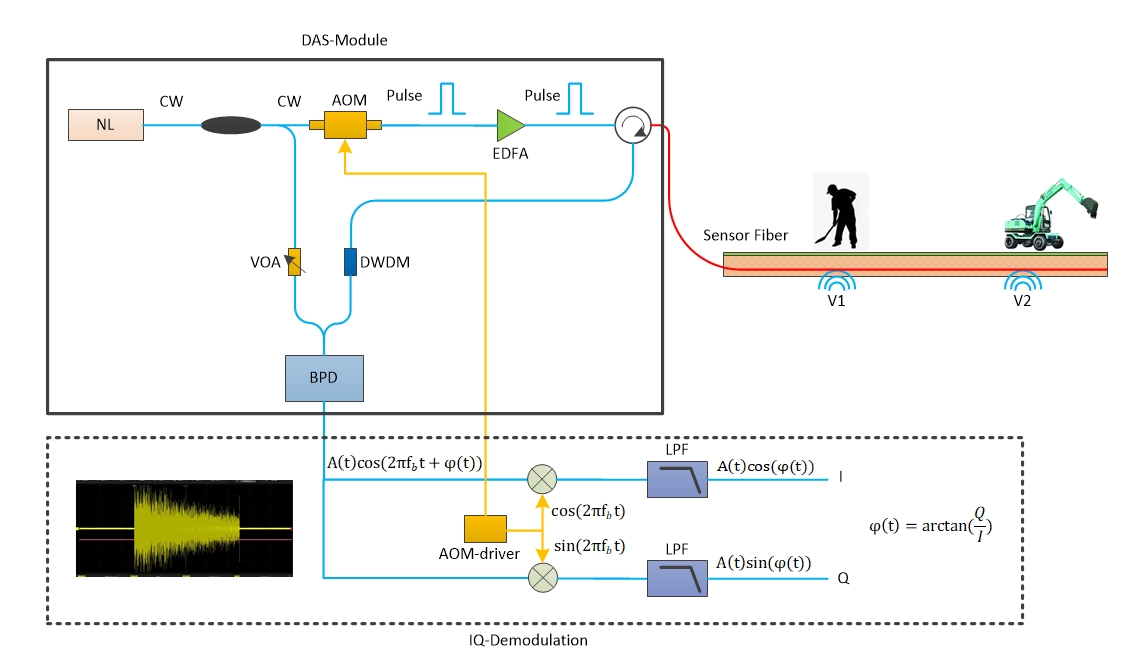Distributed Fiber Optic Acoustic Sensing
Distributed fiber optic sound sensing system (DAS) uses ordinary single mode fiber optic cable to achieve the monitoring of vibration.
DAS Introduction
A distributed fiber optic acoustic sensing system is a device that uses a single mode fiber for vibration sensing. Since the DAS is able to quantitatively restore the vibration signal at the fiber optic cable disturbance, one can play the vibration signal through the sound in order to achieve the purpose of restoring the sound.
The sampling frequency of DAS is inversely proportional to the length of the fiber optic cable, so when the cable length is longer, the sampling frequency is lower. So when the length of the fiber optic cable is very long, the system cannot acquire the sound that the human ear can hear.
DAS Implementation Principle

Common DAS systems use a coherent detection scheme, usually using an ultra-narrow linewidth laser (CW continuous light, linewidth <3k, power 20mW) as the system light source. AOM is used for external modulation to modulate the 80M pulsed light. The laser is very low power after AOM modulation and is usually amplified using an EDFA. After amplification it is transferred into the sensing fiber optic cable through a 3-port circulator. The third port of the circulator is used as a return light interface, which interferes with the intrinsic light from the laser, and then goes into a balanced photodetector for differential processing and outputting an electrical signal.
The high-speed data acquisition card acquires the analog electrical signals output from the BPD, and then performs IQ demodulation on the signals, and then performs phase unwrap on the signals after IQ demodulation to obtain the vibration signals.
DAS Integration Module
For the user's convenience, we have integrated the narrow linewidth laser, AOM acousto-optic modulator, EDFA, circulator and BPD balanced photodetector required for the DAS system.
WXG DAS Integrated Optical Module
![]()
DAS Data Acquisition Card
DAS data acquisition card is selected according to the system's AOM acousto-optic modulator, usually 80M acousto-optic modulator, we choose 250M data sampling rate acquisition card, if 200M acousto-optic modulator, we choose 1G data sampling rate acquisition card.
Due to the large amount of data in the DAS system, we use the physical interface of PCIe. The acquisition card has a built-in pulse output and a built-in IQ demodulation
The driver for the DAS data acquisition card supports Windows and Linux, while providing an API interface in the form of a dynamic link library. Users can use their favorite programming language to make interface calls.
What kind of fiber optic cable does DAS use?
DAS systems typically use fiber type G652D type fiber optic cables, usually bare fiber in the lab and armored fiber optic cables in outdoor field environments.